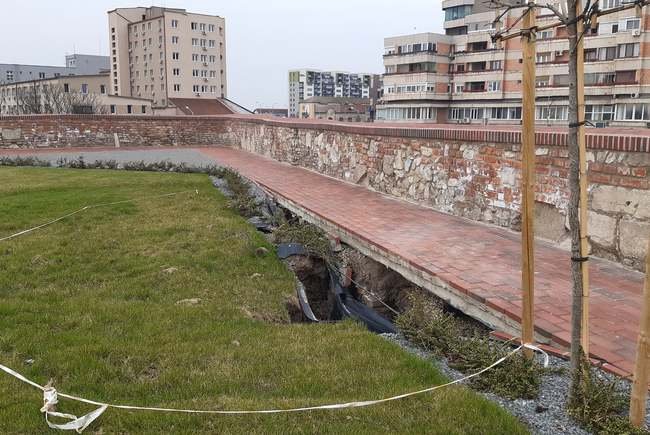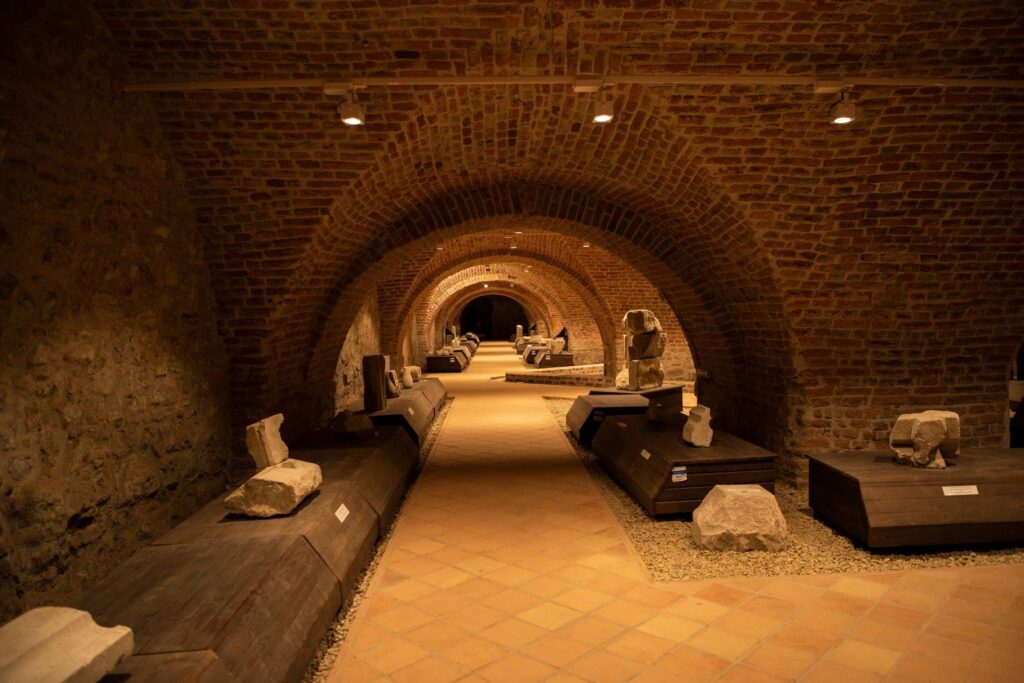Although the restoration works of the walls and two bastions of the Nagyvárad (Oradea, Großwardein) fortress have not even been completed, some of the finished work already needs repairing. As the kronikaonline news portal reported, the ground has sunk on a bastion of the Nagyvárad fortress, named after the Transylvanian Prince Gabriel Bethlen. According to Gyula Zatykó, counselor to the Nagyvárad mayor’s office in Hungarian matters, “nothing dramatic” happened, and the problem is being taken care of.
The Bethlen bastion is located near the main entrance of the fortress. The structure was filled with earth, with a promenade and grassy area created on the surface. As it turned out, the work was not carried out properly because after heavy rains in the past few months, 10 square meters of the newly laid ground sank.

As the mayor’s office announced, the trees have already been removed from the affected area in order to prevent further sinking. The city hall has also commissioned a geological study to determine the depth and density of the layers of earth filling the bastion and to find out where further intervention is needed.
“Nothing dramatic happened; no walls have collapsed, the ground just sank because of the heavy rains. The layers of earth filling the bastion must be compacted more intensely,” Gyula Zatykó told krónikaonline. As he pointed out, the quality of the renovation work is the responsibility of the contractor, and the construction site has not been handed over yet, as the renovations are still in progress. In a way, it is better to find out about these mistakes now while it is still possible to correct them, the counselor added.
The inner castle complex of the Nagyvárad fortress was restored between 2010 and 2015. The total cost of the project was RON 87.86 million, out of which RON 66.31 million was granted by the European Union. The renovated buildings within the fortress now house museums, multifunctional cultural spaces, and meeting rooms.

Upon finishing the inner building complex, the municipality applied for another EU grant for the restoration of the northern and western sections of the fortress wall and the two bastions (the so-called Csonka (Truncated) and Bethlen bastions), which were in a much-degraded condition.
The city administration received funding in 2018, and renovation work began in March 2019. The total cost of the project is RON 9.6 million, most of it covered by the EU grant. The contractor is a local company and is working with a construction deadline of this autumn. The first interventions were carried out on the northern section of the castle wall, between the Truncated and Aranyos (Golden) bastions, on the Truncated and Bethlen bastions themselves, and the section of wall between these two structures. The outer and inner sides of the walls and the crown molding ledge were cleared of vegetation, the broken bricks were replaced, and the cracks were filled. In the area of the Bethlen bastion, a small park was created. According to the communiqué of city hall, the various buildings built over time near the wall will be demolished, and the former dungeons of the fortress will be restored as well.
The Nagyvárad fortress is one of the best-preserved fortified castles in Central Europe, with elements of the late Italian Renaissance style. The building complex, which has a pentagonal base plan and is surrounded by corner bastions, gained its current form in the late 16th to early 17th centuries.
The fortress was in fact built atop earlier earthen fortifications and also an early medieval (11th century) cathedral commissioned by King Saint Ladislaus of Hungary (1046–1095). In 1618, Transylvanian Prince Gabriel Bethlen (1580–1629) had an impressive princely palace built in the fortress, which is a remarkable example of the late Italian Renaissance style in Transylvania. During communism, the fortress and its historic buildings were not maintained properly, and some portions even collapsed. When the inner buildings of the fortification were restored in 2015, a new era began; the fortress has already hosted various cultural events and festivals, and the complex has become a site with huge tourist potential.
Title image: The fortress was built with a pentagonal base plan and corner bastions. The Bethlen bastion has been filled with earth, but the work needs repairing, as the ground has sunk.
Source: wikipedia.org